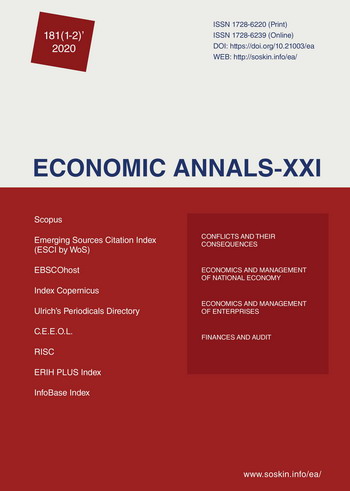Sustainable water use: spatioregional potential and limitations for the economy of Ukraine
Sustainable water use: spatioregional potential and limitations for the economy of Ukraine
Author(s): Dmytro KhodykoSubject(s): Economy, Agriculture, Energy and Environmental Studies
Published by: Institute of Society Transformation
Keywords: Water Productivity; Water Use; Production Possibility Frontier; Agricultural Water Footprint; Spatioregional Gap; Administration Conflicts;
Summary/Abstract: Introduction. Spatioregional gaps in water abundance, water productivity and use structure within the economy of Ukraine are studied insufficiently. Combined with the overall water insecurity and increased reliance on groundwater, these gaps limit the sustainability prospects and require strategically designed water policy approaches. The purpose of the paper is, firstly, to identify the sustainable production possibility frontier with respect to water use, abundance and spatial competition for water resources for the national economy of Ukraine; and, secondly, to identify economic and governance risks associated with the existing spatioregional productivity gaps, and their policy implications.Methodology. It is possible to identify the multi-dimensional national production frontier with land and water resource abundance being limiting factors. The position of the national economy under the frontier is described by the water use volumes in industry and agriculture. The maximization problem for the total output in the model provides, under certain assumptions, the realistic estimate of the economy’s output potential, as well as the qualitative classification of the regions by their current position relative to the sustainable output potential. That is why, generalized water ecosystem protection scenarios developed in the literature were applied to establish the water use restrictions at 10% of the local water abundance at the regional and the national level, both for surface water and groundwater, and the waste water volume restrictions at 80% of the local water abundance. The resulting restrictions constitute the strongly sustainable water use volumes.Results. The estimated sustainable GDP potential has only improved marginally for the 2018 data set compared to the average 2007-2011 data set, from USD 448.7 to 467.9 billion in nominal prices, suggesting lack of sustainability-contributing structural changes despite the drastic reduction in the observed water use in 2012-2018. The coefficient of agricultural output increase at the production frontier is equal to 0.89 for the 2018 model solution. This is the alarming result, suggesting highly unsustainable agricultural water footprint, which has been one of the reasons caused the generally lower sustainable GDP frontier value. Therefore, water limitations can be regarded even more relevant for sustainable development prospects compared to the well-known energy-related issues. The qualitative classification has identified two groups of regions. The first group faces the major economic risks of insufficient water supply, but should not divert excessive resources towards hedging those risks. The second group has risks of future inefficiencies, and turns out to be additionally groundwater-reliant. While no conclusions pertaining to any particular region can and should be made based on the presented model, which is essentially nation-level, it outlines the potential regional risk profiles of the sectorial investment strategies and the related environmental, budgetary and political conflicts.Conclusions. Our results call both for stronger uniformity and higher adaptivity of the water policy and management frameworks. The legislative basis should be improved for efficient participation and stronger links between the basin management plans and enforcement of water use and efficiency requirements. Further research should include development of a strong multi-level institutional framework for participatory water management, assessment of administrative and economic instruments within the context of river basin management, and studies of public-private clustering in water use.
Journal: Економічний часопис - ХХІ
- Issue Year: 181/2020
- Issue No: 01+02
- Page Range: 68-82
- Page Count: 15
- Language: English

